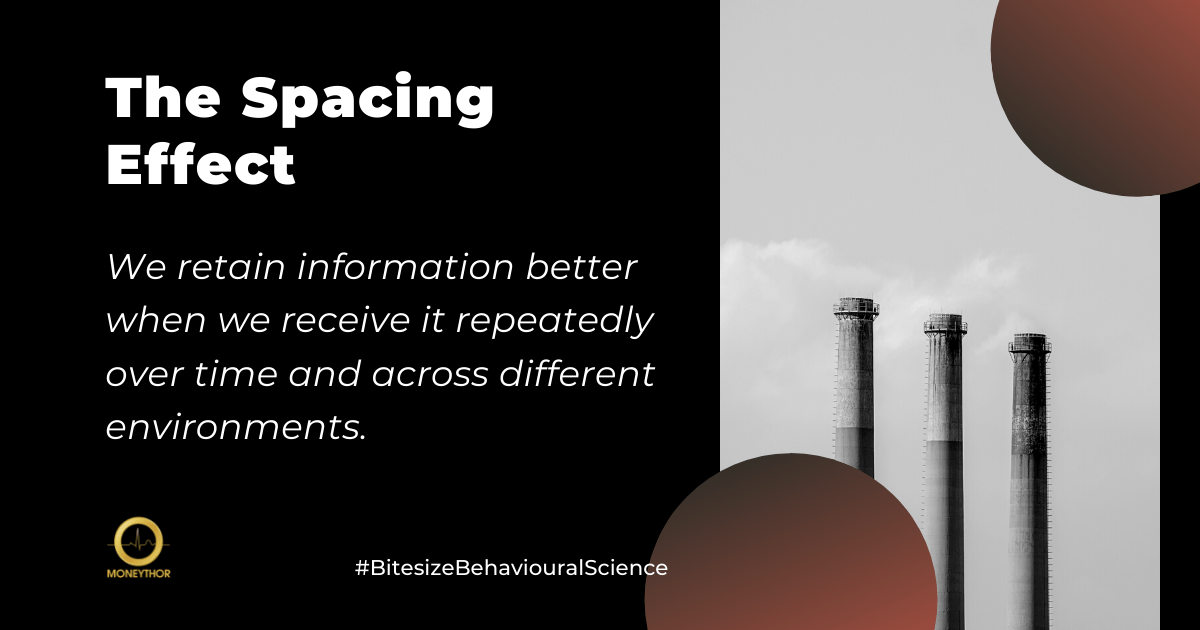What is the Spacing Effect?
We retain information better when we receive it repeatedly over time and across different environments. A song can turn into an ear worm if you hear it every day on the way to work – background noise forms coherence and becomes a recognised tune with lyrics you somehow know, without ever intending to.
This is an example of the Spacing Effect. When we learn ideas and develop concepts across several, distributed sessions over time, information recall happens a lot more efficiently. In educational psychology, the spacing effect has been studied extensively as an invaluable memory technique, and has been shown to facilitate effective learning practices.
Advertisers and marketers utilise the same model when featuring products and services with the aim of building consumer recognition and supporting sales. Such an approach offers a direct correlation to sales conversions as consumers are more likely to respond to a product placement or ad if they have seen it repeatedly, over an extended period of time.
How can financial institutions use the Spacing Effect to enable better personal financial management?
Make progress trackable
The first stage to helping customers make good financial decisions is giving them a holistic overview of their finances. Personal financial management (PFM) solutions do this by providing customers with money management tools such as savings goals tracking, transaction analysis and cash flow forecasting. Being able to see a temporal breakdown of expenditure allows customers to understand how they are spending their money, watch their savings progress and plan for future expenses.
Charting progress with savings goals lets customers continuously track the growth of their investments, whilst providing frequent reinforcement through the Spacing Effect. This helps with the customers’ personal financial accountability, and ideally promotes longevity in their newly adopted financial habits.
Spread out the messaging
Interactive financial wellbeing programmes running over a few weeks or months can be used as a tool to help consumers develop improved financial management techniques. Nudges and reminders to receive financial tips, invitations to challenges and smart spending strategies can be spaced out and repeated in the form of content delivered through financial wellbeing programs. The reiteration of such nudges helps individuals to gradually develop improved personal assessments and decision making processes, and effectively motivate continued and sustainable behavioural changes over time. In the same way the earworm grows from a minor observation into an ever-present melody, the financial insights offered through digital banking applications can develop into habits and behavioural changes – all with the intention of promoting financial wellbeing.
Gamification as a spacing strategy
After learning something new, effective recall is important in reinforcing these new memories by allowing our brain to revisit the newly-formed neurological pathways. Gamification can be used as a spacing strategy to remind consumers of the desirability of financial wellness improvements, which they are trying to develop. The feedback loops generated by interactive mini-games and quizzes keep customers engaged whilst positively reinforcing newly acquired financial habits in the long run. Points systems and fun rewards coupled with weekly or monthly financial goals can further support these positive feedback cycles and give the customer a continued sense of growth and improvement.
Conclusion
The Spacing Effect can be effectively implemented into digital banking platforms to support customers to develop better financial habits over an extended period of time. Marketing campaigns, PFM solutions and financial wellbeing programmes are all able to use the benefits of spaced messaging to reinforce behaviours and establish positive feedback systems to meet their desired outcomes. The timing of such messages and nudges, the choice of information being communicated and the need to revisit these ideas through gamification are central to effective implementation of such ideas and the utilisation of the Spacing Effect to its full potential.

